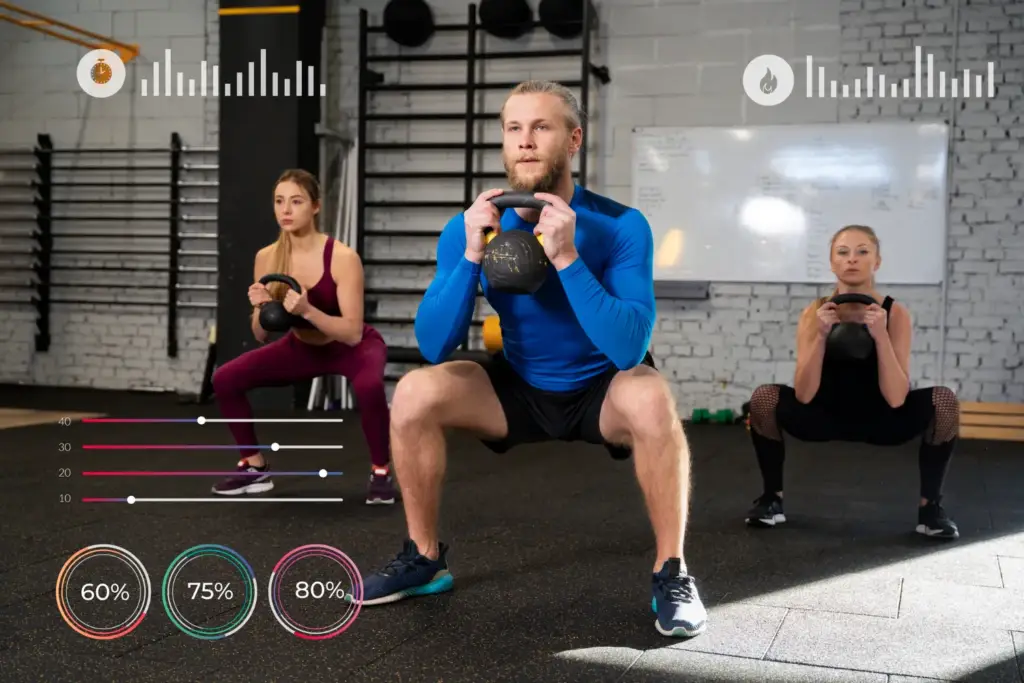In the fitness world of 2025, one trend has caught massive attention: Zone 2 cardio. Whether you’re a beginner, athlete, or simply trying to improve health, you’ve probably heard trainers, doctors, or influencers recommending it. But what is Zone 2 cardio, and why is it so effective for fat burning, endurance, and overall longevity?
When I first tried Zone 2 training, I was skeptical. How could “just walking briskly or cycling slowly” transform fitness? But within six weeks of steady practice, I noticed a big difference—my energy levels increased, recovery between workouts got easier, and I dropped stubborn belly fat without exhausting HIIT sessions. That real experience made me a believer, and in this guide, I’ll break down everything you need to know about Zone 2 cardio in 2025.
What Is Zone 2 Cardio?
Zone 2 cardio refers to exercising at a moderate intensity, where your heart rate stays in a specific range that allows fat burning and endurance building. It’s the zone where you can talk comfortably while working out but still feel slightly challenged.
Heart Rate Zones Explained
- Zone 1: Very light activity (walking slowly).
- Zone 2: Light-to-moderate intensity, steady pace, fat-burning zone.
- Zone 3–5: Higher intensities, including HIIT and sprinting.
Zone 2 Heart Rate
Generally, your Zone 2 heart rate is about 60–70% of your maximum heart rate (HRmax).
👉 Example: If you’re 30 years old, HRmax ≈ 220 – 30 = 190.
Zone 2 range = 114–133 beats per minute.
This is the “sweet spot” for fat burn and metabolic health.
Benefits of Zone 2 Cardio
Zone 2 cardio training offers multiple science-backed benefits:
1. Zone 2 Fat Burning
At this intensity, your body uses fat as its primary fuel source, making it ideal for weight loss.
2. Endurance & Stamina
Long-distance runners and cyclists rely on Zone 2 training for endurance, as it conditions the body for longer workouts without fatigue.
3. Longevity & Overall Health
Studies show Zone 2 cardio supports cardiovascular health, lowers risk of chronic disease, and promotes longevity.
4. Metabolic Flexibility
Zone 2 training improves how efficiently your body switches between burning carbs and fats.

How to Calculate Zone 2 Heart Rate
1. Simple Formula
- 220 – Age = HRmax
- Zone 2 = 60–70% of HRmax (you can read more about target heart rate ranges here from the American Heart Association).
2. Maffetone Method
- 180 – Age (then adjust based on fitness level).
3. Fitness Trackers & Smartwatches
Modern devices like Garmin, Polar, and Apple Watch can track your heart rate zones automatically.
Best Zone 2 Cardio Workouts
Here are some of the best Zone 2 cardio exercises you can try in 2025:
- Brisk walking (20–40 minutes)
- Light jogging
- Steady-state cycling
- Rowing machine sessions
- Swimming at a comfortable pace
👉 If you prefer home-based training, try pairing cardio with bodyweight strength workouts for balanced fitness.

Zone 2 Cardio for Weight Loss
Zone 2 is perfect for sustainable fat burning. Unlike HIIT, which burns calories quickly but can cause burnout, Zone 2 can be done frequently without stressing your body.
- Recommended: 150–180 minutes per week.
- Spread across 4–5 sessions.
When I combined Zone 2 walking (30 minutes daily) with clean eating and weight loss foods, I noticed steady weight loss without the usual “yo-yo” effect.
How to Add Zone 2 Cardio in Your Routine
Zone 2 Cardio for Beginners
- Start with 20 minutes of brisk walking.
- Track your heart rate to stay in Zone 2.
Progression & Zone 2 Training Plan
- Week 1–2: 3 sessions (20–30 min each).
- Week 3–4: 4 sessions (30–40 min each).
- Week 5+: Add variety with cycling, rowing, or jogging.
Consistency is key. Even if you do simple lifestyle changes, Zone 2 cardio will amplify results.
Zone 2 Cardio vs HIIT
Many people compare Zone 2 vs HIIT training. Here’s how they differ:
- Zone 2: Steady, low-intensity, ideal for fat burn and endurance.
- HIIT: Short, intense bursts for calorie burn and speed.
👉 Best strategy: Use both. Zone 2 for your base, and HIIT 1–2x a week for performance.
Zone 2 Training in 2025 – Trends
- Personalized heart rate zones with AI-driven trackers.
- Rising popularity of Zone 2 cycling and running apps.
- Endurance athletes using Zone 2 as their primary base training.
FAQs
1. How long does it take to see Zone 2 training benefits?
With 3–4 sessions per week, most people notice better endurance and daily energy within 4–6 weeks. Fat-burning efficiency and stamina keep improving if you stay consistent.
2. Is Zone 2 cardio effective for beginners?
Yes, it’s perfect for beginners. The low intensity makes it safe and easy to start with walking, light jogging, or cycling, while still building a strong fitness base.
3. How do I know I’m in Zone 2?
Use the “talk test”: you should be able to speak in full sentences but not sing. For accuracy, track your heart rate at about 60–70% of your maximum.
4. Which is better, Zone 2 vs HIIT?
They serve different goals. Zone 2 improves endurance and fat burn, while HIIT builds speed and power. The best approach is combining both in your weekly training.
Conclusion
Zone 2 cardio isn’t just another fitness fad it’s one of the most sustainable, effective, and health-friendly workouts you can do in 2025. From burning fat to boosting endurance and longevity, its benefits are undeniable.
If you’re ready to start, pick an activity you enjoy, track your heart rate, and stay consistent. Combine it with healthy eating tips and weight loss supplements for faster results.
👉 The best time to begin Zone 2 training was yesterday. The second-best time is today. Lace up your shoes, set your tracker, and start your journey to better health.




1 Comment
Areeba
The body achieves what the mind believes✨